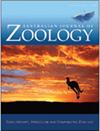一种改进的考拉粪便调查方法的建立
IF 1
4区 生物学
Q3 ZOOLOGY
引用次数: 3
摘要
摘要考拉粪便调查是确定大型森林地区考拉存在和分布的重要工具,在这些地区进行直接观察调查是不切实际的。然而,目前的粪便调查方法由于缺乏准确性或可行性而存在问题,即它们要么是有偏见的,要么是非常耗时的。本研究旨在建立一种新的考拉粪便调查方法,与现有方法相比,该方法的准确性更高,并且具有实际应用价值。本文提出了一种新的平衡考拉粪便调查方法(BKSS),并通过分析粪便可检出性变化,与现有的斑点评估技术(SAT)进行比较,对该方法进行了实地评估,以确定粪便的搜索精度。结果表明,目前的方法由于对所有树木分配一致的搜索努力而存在偏差,因为发现第一个粪便的有效搜索时间受到考拉活动水平(KAL -在调查地点的所有30棵树木中发现粪便的树木的比例)的显著影响。与BKSS相比,SAT倾向于产生更多的假阴性结果;当KAL较低时,SAT可能会错过高达46%的树木。BKSS的应用有望大大提高考拉粪便调查在确定考拉分布方面的可靠性,从而改善考拉的保护管理。本文章由计算机程序翻译,如有差异,请以英文原文为准。
The development of an improved scat survey method for koalas (Phascolarctos cinereus)
Abstract. Koala scat surveys are important tools for determining koala presence and distribution in large forested areas where it is impractical to conduct direct observation surveys. However, current scat survey methods are problematic due to lack of either accuracy or feasibility, i.e. they are either biased or very time-consuming in the field. This study aimed to establish a new koala scat survey method with improved accuracy compared with existing methods, and practical in the field. We developed a new Balanced Koala Scat Survey method (BKSS), and evaluated it in the field by analysing scat detectability variations and comparing it with a current survey method, the Spot Assessment Technique (SAT), to determine scat searching accuracy. The results revealed that current methods were biased by assigning consistent searching effort for all trees, because effective searching time to detect the first scat was significantly affected by Koala Activity Level (KAL – the proportion of trees found with scats among all 30 trees in a survey site). Compared with BKSS, SAT tended to yield more false negative outcomes; SAT may miss up to 46% of trees with scats when KAL was low. The application of BKSS is expected to greatly enhance the reliability of koala scat surveys in determining koala distribution and thus improve their conservation management.
求助全文
通过发布文献求助,成功后即可免费获取论文全文。
去求助
来源期刊
CiteScore
2.40
自引率
0.00%
发文量
12
审稿时长
>12 weeks
期刊介绍:
Australian Journal of Zoology is an international journal publishing contributions on evolutionary, molecular and comparative zoology. The journal focuses on Australasian fauna but also includes high-quality research from any region that has broader practical or theoretical relevance or that demonstrates a conceptual advance to any aspect of zoology. Subject areas include, but are not limited to: anatomy, physiology, molecular biology, genetics, reproductive biology, developmental biology, parasitology, morphology, behaviour, ecology, zoogeography, systematics and evolution.
Australian Journal of Zoology is a valuable resource for professional zoologists, research scientists, resource managers, environmental consultants, students and amateurs interested in any aspect of the scientific study of animals.
Australian Journal of Zoology is published with the endorsement of the Commonwealth Scientific and Industrial Research Organisation (CSIRO) and the Australian Academy of Science.

 求助内容:
求助内容: 应助结果提醒方式:
应助结果提醒方式:


